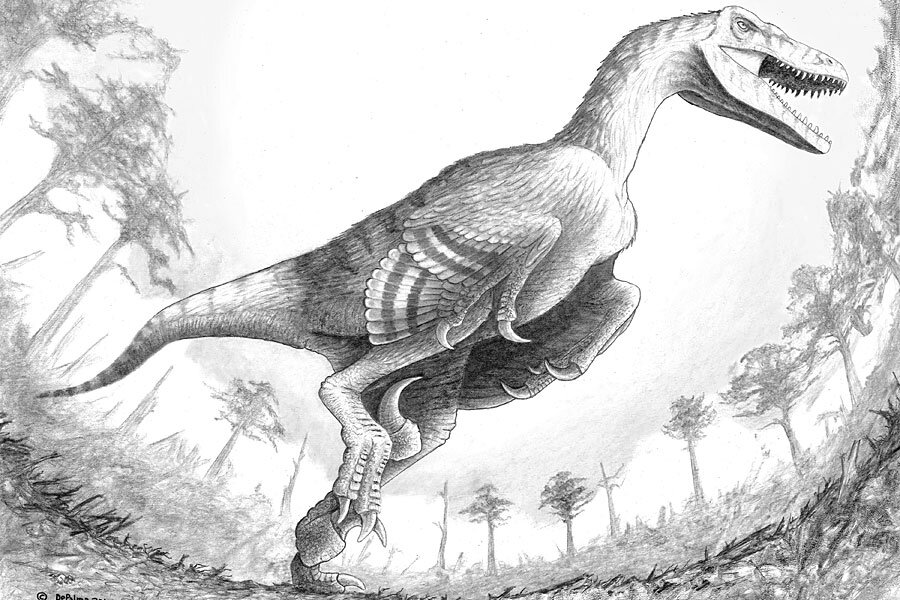A jumbo raptor once roamed South Dakota, say scientists
Loading...
A new dinosaur discovered in South Dakota may break the raptor scale.
Dubbed Dakotaraptor steini, the new animal is one of the most massive of its kind. Researchers think the raptor stretched about 17 feet long when it lived some 66 million years ago.
Researchers describe the raptor, one of a family of swift, birdlike dinosaurs that thrived in the Cretaceous Period, in a paper published Oct. 30 in Paleontological Contributions.
Dakotaraptor may have been massive for a raptor, but its size lies right between those of two groups of dinosaurs.
“This new predatory dinosaur also fills the body size gap between smaller theropods and large tyrannosaurs that lived at this time,” paleontologist and study co-author David Burnham said in a news release.
Despite its size, Dakotaraptor had some similar physical features as smaller raptors.
“This Cretaceous period raptor would have been lightly built and probably just as agile as the vicious smaller theropods, such as the Velociraptor,” lead author Robert DePalma said.
Like the famed Velociraptor, the Dakotaraptor specimen appeared to have once had feathers on its forearms.
The new fossil seemed to have “quill knobs,” a feature that shows where feathers would have been attached.
Does that mean it could fly?
Quill knobs are “a derived character related to flight that were once thought exclusive to birds,” the authors write in their paper.
But, they write, “The size and proportions of Dakotaraptor almost certainly preclude its potential for flight.”
“Rather, it is more plausible that Dakotaraptor descended from an evolutionary line that already possessed flight or that was already sufficiently close to attaining it that it had evolved a suite of advanced adaptations for its facilitation,” suggesting that Dakotaraptor could help fill in the blanks when it comes to scientists’ understanding of the evolution of flight and flightnessness.
Dakotaraptor was found at the Hell Creek Formation, a spot scientists have flocked to, finding many dinosaur fossils. The formation stretches across four states, Montana, North Dakota, South Dakota, and Wyoming.
This new discovery could change researchers’ perspective of the region's prehistory.
As these researchers write, “The discovery of Dakotaraptor drastically revises our view of the Hell Creek fauna by introducing a particularly large, feathered, predatory animal into the late Cretaceous paleoecology.”






